Exhibitions
The Globalization of Hangeul
Home > Exhibitions > Permanent Exhibition > The Globalization of Hangeul
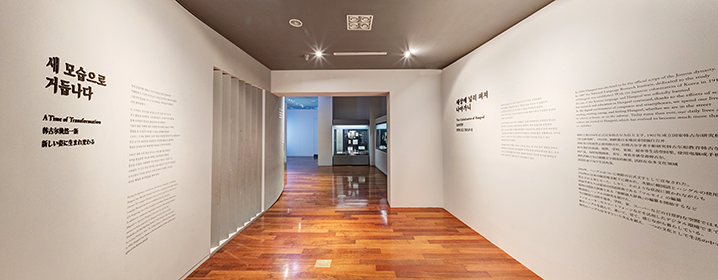
During the Japanese colonial era, the Korean language, including Hangeul, was officially banned, but its use continued through various channels. For example, Hangeul was actively studied by the Joseon Language Research Institute, established by the disciples of Ju Si-gyeong, one of the founders of modern Korean linguistics. In addition to conducting important research, this group worked diligently to maintain Hangeul education by producing various teaching materials for Hangeul and announced the “Draft for a Unified Spelling System” that became the standard for writing Hangeul. After the independence of Korea from Japan in 1945, Hangeul was reborn as the foundation of the culture and spirit of the Korean people.
1) Hangeul Research
The first non-Koreans to study Hangeul were nineteenth-century missionaries and diplomats, but the systematic study of the language
did not begin until the early twentieth century. In particular, the National Language Research Institute was established and has
remained at the forefront of Hangeul research ever since.
During this period, Hangeul was primarily studied as the foundation of Korean grammar, with a focus on the letters and pronunciations.
Various articles with titles such as “National Language Summary,” “National Language Phonetics,” and “Sound of Words” provided detailed
explanations about how to pronounce both the individual letters and letter combinations of Hangeul.
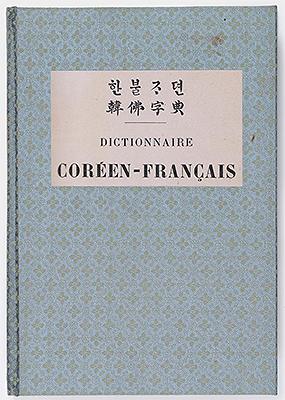
Hanbuljajeon
2) Standardization of Hangeul Alphabet
As a result of official political reforms in 1894, Hangeul was officially declared the national language of Joseon, with the title of
“Gukmun” (Korean national language). This status necessitated the creation of an official standardized form of the Hangeul alphabet,
which had previously been used freely according to individual tastes, without any official guidelines.
In 1907, the National Language Research Institute, created by the Learning Ministry (equivalent to today’s Ministry of Education),
published “Proposals for the Study of the National Language,” which contained ten categories of proposals for enhancing the Hangeul
alphabet system. However, none of these proposals was ever adopted, as Korea became a protectorate of Japan in 1910. During the colonial
era, the Japanese led some discussions about creating a standardized Korean alphabet, but they did not lead to any significant results.
In 1930, the Joseon Language Institute renewed the national effort to standardize the Hangeul alphabets and published “Proposal for
Korean Alphabet Standardization and Proposal for Standardized Romanization of Foreign Language in Hangeul.” As a result, rules governing
the Hangeul alphabet, spelling, and romanization were ratified, and continue to exist (in modified form) to this day.
3) Hangeul Education
In 1895, shortly after Hangeul became the national alphabet, the “White Paper on Education” was published, initiating the systematic
study of Hangeul. The first Hangeul textbook was The People’s Sohak Textbook, published by the Learning Ministry, the equivalent to
today’s Ministry of Education. Since then, numerous Hangeul textbooks have been published by various public and private publishers.
With the full-scale occupation of Korea by Japan, the term “national language” was replaced by “Joseon language,” in accordance
with a 1911 Japanese treatise entitled “Revision of Joseon Education.” This diminishment in status was also reflected in Korean
language textbooks. But despite these and other oppressive measures, the education of Hangeul and the publication of Hangeul
textbooks continued.
With Korean independence in 1945, Hangeul education and enlightenment campaigns were enacted. Various social organizations,
such as the Joseon Language Institute, worked diligently to erase the lingering presence and influence of the Japanese language
and fully restore Hangeul as the national language of Korea. As part of their efforts, they produced many Hangeul textbooks and
established various places for people to learn Hangeul.
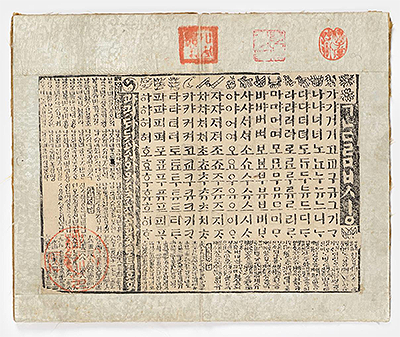
Eonmun Banjeolpyo
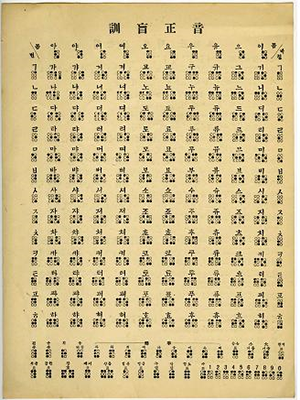
Saminpilji
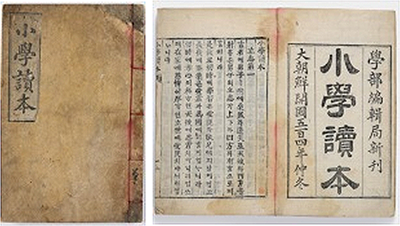
Sohakdogbon


















